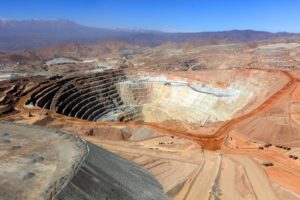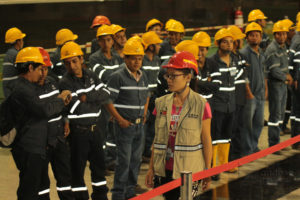Read in Chinese 中文版本
The search for what is different and unique about Chinese investment in Latin America occupies a large part of the time for those who study these relationships. Some analyses lean toward optimistic exaggeration, pointing to China as a great benefactor willing to engage in equal relations and to provide development opportunities to any country willing to open its doors to a wave of investments.
More frequently however, conclusions take on an ominous tone and characterise China as a giant to be feared, overlooking social and environmental devastation, violating fundamental rights and appropriating the resources of fragile nations.
Both perspectives suffer from hyperbole.
Despite unique characteristics in terms of their proprietary structure, sources of financing and business development, Chinese companies in Latin America are not particularly distinctive at the local level. Nor do they qualitatively transform relations between society, environment and the practice of relying on extractive industries for economic development, otherwise known as ‘extractivism’. Therefore, they are more aligned with other international companies in the sector. That said, it is still possible to highlight important differences between Chinese investors.
The large volume of investments since the 2008 global financial crisis point to China as a power of significant importance to the region.
There are several stakeholders and factors which have to be taken into account in understanding Chinese extractive investments in the region, and their role from a social and environmental perspective. Firstly, we can differentiate among stakeholders having a direct or indirect impact. Among those with an indirect influence are Chinese political banking institutions, which have negotiated loans worth US$140 billion to the region, according to US think-tank the Inter-American Dialogue’s China-Latin America Finance Database.
These credits are in large part paid with natural resources, or are at least guaranteed by sales of raw materials, enhancing extractivism in Latin America. Chinese state banks have also encouraged Chinese investment in the region with soft loans that in recent years incorporate social and environmental regulations, although their supervisory capability is very limited.
In focusing on the direct impacts, we must study concrete extractive projects. Here, we must highlight Chinese investor power, but at the same time put into perspective how, for example, Canada’s investment activity in mining in the region is way ahead of China’s. The large volume of investments since the 2008 global financial crisis point to China as a power of significant importance to the region.
Chinese companies that operate in Latin America stand out for their diversity: state-owned at the central government level such as Chinalco; partially state-owned at the municipal level such as Zijin; or privately-owned such as Nanjinzhao, to give some examples. Although all of them purport to bring economic benefits, some central government state companies are also concerned with the effects their activities have on the image of the China and its diplomatic interests.
However, the most important distinction has to do with local subsidiaries and collaborators. There are two key factors here. In countries like Peru, Chinese companies inherit business and personal structures from the companies they acquire. Their approaches at the local level have often reflected previous ones. In some cases, this has meant reducing costs as part of a modus operandi that shows little concern for social and environmental issues.
In other cases, this leads Chinese companies to foster cordial relations with local populations through corporate responsibility programmes and investment in communication, although as in the case of other transnational companies, the impacts of these strategies tend to be limited, as the main objective is to optimise economic benefits with quick start-up projects.
Chinese companies in Latin America adhere to the logic of capitalism in that they are seeking to be competitive in a globalised world
Geographical context is also key. Projects already in the production phase or new projects located in regions with an extractivist tradition tend to go unnoticed, while those that try to break through in economic regions which are mainly agricultural in nature are likely to face greater opposition, and their impacts are often more problematic due to the dependence of local economies on water resources. The weight of environmental issues on national development agendas and the host nation’s capacity, will to supervise projects and to penalise infractions, play an essential role.
Interestingly, given the need for economic development and the few alternative products in which Latin America is competitive, we find governments with completely opposing political ideals (be they Ecuador and Peru, or Venezuela and Brazil) that equally support mining expansion, sometimes facing criticism from environmental groups or indigenous organisations. This indicates that beyond governmental capacity, there is a generalised will to support extractivism that can compromise social and environmental priorities.
Finally, civil society is key when it comes to controlling and mitigating the negative impacts of extractivism, with a large number of projects stalled due to social mobilisations. Social conflicts are often sparked by either labour issues or those related to territorial and environmental issues.
However, and with some exceptions, the different conditions under which Chinese civil society operates means it can rarely apply the same pressure on companies registered locally to demand that they improve their behaviour abroad. This is a strategy that, although not always effective, is more common in democratic countries where NGOs monitor the activities of national companies and even collaborate with affected populations in the region.
Chinese companies in Latin America adhere to the logic of capitalism in that they are seeking to be competitive in a globalised world. In this respect, as well as in their behaviour at the local level, they resemble other transnationals in the region. However, it is also necessary to emphasise the high degree of diversity among Chinese investors, which merits further study, and take into account different local contexts.
This article was first published in Spanish by the Red China & America Latina: Enfoques Multidisciplinarios and can be found here.








